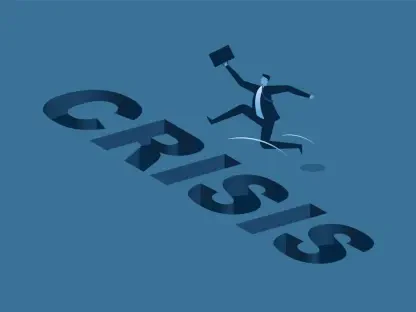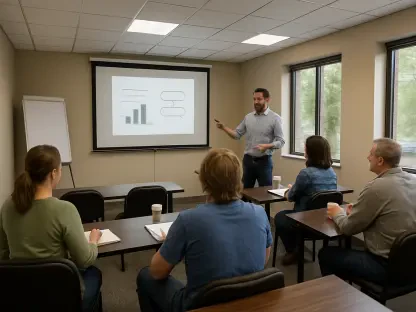United Academics of Ohio University (UAOU) is on course to conduct a vote for forming a union among professors and teachers at Ohio University. This pivotal move towards unionization seeks to establish stronger protections and better working conditions for the faculty. The election, overseen by the State Employment Relations Board, will be conducted by mail, with ballots being distributed on February 12. Faculty members must return their ballots between February 18 and March 4 for their votes to be considered valid. This initial election is part of a larger process intending to form two separate bargaining units. While the immediate vote focuses on one group of faculty, a second election will take place at an undetermined future date to include clinical faculty from the College of Health Sciences and Professions, and most members of the Heritage College of Osteopathic Medicine.
The Need for Unionization
John O’Keefe, an associate professor of history at the OU Chillicothe campus and the director of communications for UAOU, highlighted the critical need for unionization. He noted that Ohio University and Ohio State University stand as the only major universities in the state without faculty unions. O’Keefe pointed out that the pandemic-driven measures, particularly the retrenchment and subsequent layoffs of non-tenured faculty, underscored the importance of having a robust union to safeguard against arbitrary decisions by university leadership. He emphasized that through the union, better protection against such unpredictable layoffs can be ensured. Moreover, the UAOU aims to improve faculty teaching and student learning conditions. A significant concern among the faculty is the increasing pressure to accommodate more students per class, which can dilute the quality of instruction. O’Keefe stressed the need for maintaining high-quality teaching environments where faculty can effectively engage and know their students, fostering an environment conducive to comprehensive learning for all. Ensuring small class sizes and adequate support structures is crucial for upholding Ohio University’s academic standards and enhancing the educational experience for all students.
Origins and Support for Unionization
The origins of the current unionization efforts trace back to 2020 when UAOU began engaging faculty to gauge their interest in forming a union. Results indicated strong support among the faculty, which led UAOU to reconfirm their commitment and move forward with an official vote scheduled for March 2024. However, the process of gaining full recognition for UAOU has encountered several obstacles. O’Keefe reported frustrations with the delays caused by the law firm hired by the university to handle the process. Nevertheless, he noted progress in recent weeks as both sides engaged in discussions to resolve disagreements, particularly those concerning the inclusion criteria for the union.
Despite these challenges, the steadfast support among faculty highlights a collective desire for a more secure and equitable working environment. The overwhelming engagement with UAOU’s efforts from the outset demonstrates the shared determination to seek better protections and address long-standing concerns about employment conditions and decision-making transparency. UAOU’s commitment to sustained communication and advocacy has played a pivotal role in mobilizing faculty support and maintaining momentum towards the upcoming vote.
Addressing Faculty Concerns
Christoph Hanisch, a professor in the philosophy department and a member of UAOU’s communications committee, described the group’s efforts to disseminate information and address faculty queries regarding the union and the forthcoming vote. Hanisch emphasized the importance of addressing all concerns seriously to represent faculty comprehensively. Currently, faculty regulations at OU are governed by the faculty handbook, which according to Hanisch, lacks enforceability. The layoffs during the pandemic, which allegedly went against some provisions of the handbook, highlighted the absence of legal means for faculty to contest such measures. The formation of the union aims to provide this legal backing and enforce collective bargaining agreements (CBAs). Ensuring clear and consistent communication with faculty members has been a crucial part of UAOU’s strategy. Faculty concerns about job security, workload, and working conditions have been front and center in discussions, and UAOU has made concerted efforts to provide detailed information and address any misconceptions. By fostering an environment where faculty feel heard and their concerns are taken seriously, UAOU aims to strengthen collective resolve and ensure broad-based support for unionization efforts.
Financial Considerations and Collaboration
Upon the establishment of the union, faculty members will be required to pay dues, although the specific amount will be determined post-formation. These dues will be deducted directly from members’ paychecks. In working towards this goal, UAOU has maintained collaboration with the Faculty Senate. Sarah Wyatt, a professor of environmental and plant biology and a member of the Senate, expressed the Senate’s willingness to cooperate with UAOU. Wyatt reiterated her belief in shared governance and acknowledged the limitations of the Faculty Senate, which does not possess negotiation powers that a union would hold. Through a union, faculty could negotiate for improved salaries and benefits, addressing disparities highlighted in the Senate’s compensation reports. While the Senate continues to play a pivotal role in shaping educational policies and representing faculty interests, it lacks the bargaining power to negotiate employment terms. The prospect of UAOU taking on this role presents a promising opportunity for faculty to secure better compensation and working conditions. Wyatt’s endorsement of the unionization effort underscores a sense of shared purpose among faculty senate members and UAOU, driving forward a unified mission to enhance faculty welfare.
Future Steps and Goals
The drive for faculty unionization started in 2020 when UAOU began polling faculty to determine their interest in forming a union. The results showed robust support, prompting UAOU to reaffirm its commitment and plan an official vote for March 2024. However, the path to full recognition for UAOU has not been smooth. O’Keefe expressed frustration with delays caused by the university’s law firm managing the process. Yet, recently there has been progress as both parties have engaged in discussions to resolve disagreements, particularly regarding who should be included in the union. Despite these hurdles, the strong support demonstrated by the faculty underscores a collective desire for a more secure and equitable work environment. The high level of engagement with UAOU’s efforts from the beginning reflects a shared determination to seek improved protections and address persistent issues around employment conditions and transparency in decision-making. UAOU’s dedication to ongoing communication and advocacy has been crucial in rallying faculty support and keeping the momentum going toward the upcoming vote.








